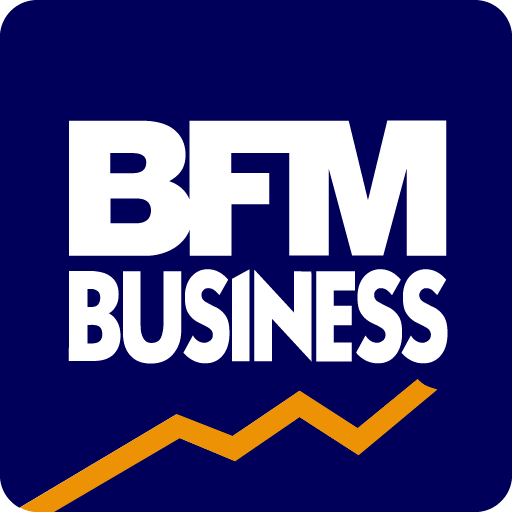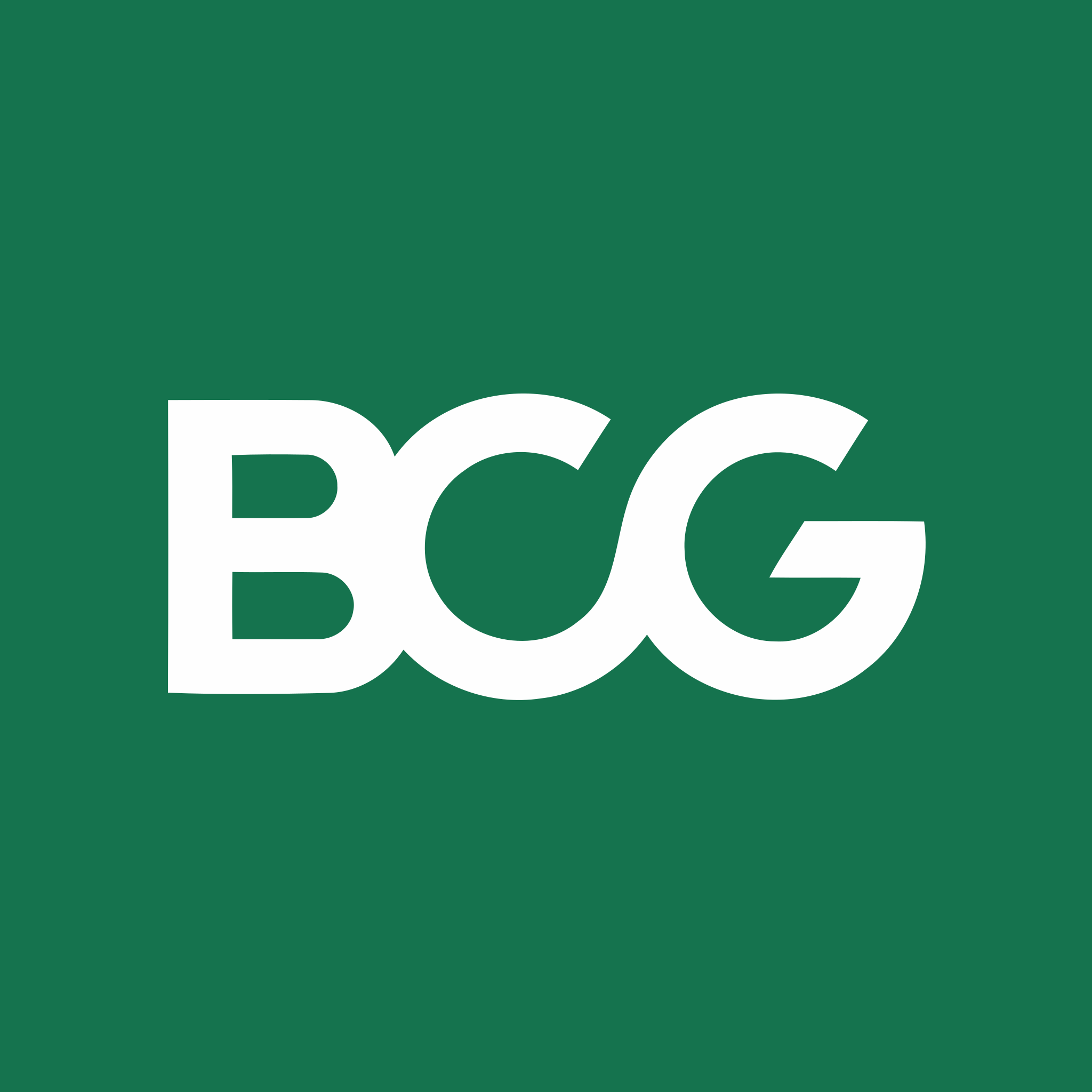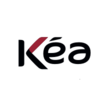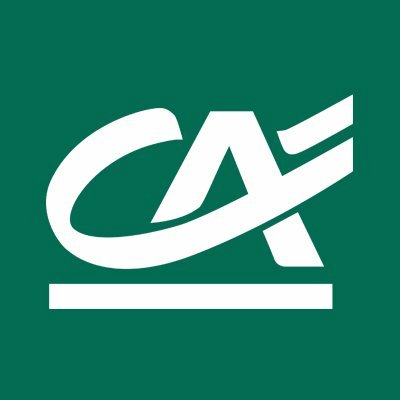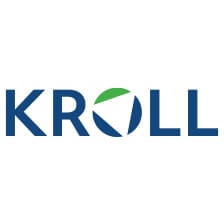Summary of our market study
The French farm animal feed market is stable, estimated at over 13 billion euros.
The global farm animal feed market is estimated at $432 billion in 2022, and is expected to grow at an average annual rate of 4.2%.
The market is made up of cereal-based feeds, proteins and food waste, complemented by various feed additives. Demand is stable, despite the decline in livestock numbers from around 35 to 40 million head in 2018 to 35 to 40 million in 2023.
Cattle (60-65%), poultry (14-16%) and pigs (around 13-15%) are the main feed consumers.
The French feed market is down by almost 8% compared to peak production levels.
brittany, with a workforce of 2,500 and a number of companies approaching 70, is the sector's main production region.
Feed is either produced on the farm foron-farm consumption, shipped in bulk, or sold retail.
A growing trend is the incorporation ofinsect-based feeds
Over 80% of lysine supplies come from China.
Players in the livestock feed sector
- Metabolic Explorer, a producer of amino acids, is trying to resist competition from imports from China.
- Large cooperatives play a key role in the market
- Alltech: a global feed giant
- The European Feed Manufacturers' Federation represents the interests of the European feed industry.
to understand this market
Detailed content of our market study
 Inforamtion
Inforamtion
- Number of pages : 35 pages
- Format : Digital and PDF versions
- Last update :
 Summary and extracts
Summary and extracts
1 Market summary
1.1 Definition and scope of the study
The farm animal feed market encompasses the production and distribution of feeds specially designed to meet the nutritional needs of farm animals such as cattle, pigs, poultry and sheep. This sector involves a wide range of activities, from agricultural production to livestock breeding and the agri-food industry.
The sector's products are based on the use of two main types of raw material:
-compound feeds (mixtures of raw materials)
-additives (incorporations that improve foodstuffs)
The global market is expected to grow at an average annual rate of4.2% between 2023 and 2032. This growth is due in particular to increased demand foranimalfeed . What's more, the supply of products is constantly innovating, a dynamic that leads toa relentless increase in demand.
Despite stabilization in 2021 and 2022, the French livestock feed market experienced sustained growth between 2015 and 2022 , and represents a significant share of the European market. The development of this market is driven in particular by a growing concern for the dietary health of animals and increased attention to the benefits of additives in feed.
The feeds most consumed by farm animals in France are proteins such as soya and cereals such as corn, wheat and barley, although there is also a growing demand for additives. and barley, although a significant proportion of their diet is also made up of food waste, i.e. unsold human food.
In recent years, the French farm animal feed market has been characterized by a general increase in costs. This phenomenon, which has particularly affected the corn and soybean segment, represents a major threat to market operators, as it can jeopardize the entire supply chain of what is a key sector for the Italian economy.
The public is also increasingly concerned about the resource availability problems posed by the feeding of training animals, as it is claimed that this type of animal consumes an excessive amount of primary resources and land that is consequently withdrawn from human availability.
1.2 Global market size
The livestock feed market will be worth $*** billion by **** (***), and is expected to grow at a CAGR of *. *% to ****. This growth is driven by increasing demand for animal feed worldwide. While the emergence of new trends such as vegetarian and vegan diets or a focus on animal welfare, including farm animals, is potentially detrimental to the the industry, these trends are more than offset by global population growth,urbanization and the general increase in consumption of meat and other animal products such as milk and eggs.
Livestock feed market size World, ****-****, billions of dollars researchanmarkets
Geographically, production is heavily concentrated in China and the United States, with other producing countries, albeit widely spaced, including Brazil, India, Mexico, Spain, Russia, Turkey, Japan and Germany.
According to the Alltechthese ** countries accounted for **% of global farm animal feed production in ****:
Country Production in thousands of tonnes *. China *** *** *. united States *** *** *. Brazil ** *** *. India ** *** *. Mexico ** *** *. Spain ** *** *. Russia ** *** *. Turkey ** *** *. Japan ** *** **. Germany ** ***
France ranked among the top ** producers, with production of **,*** thousand tonnes in ****.
1.3 The European market
Source: ****
According to FEFAC members, compound feed production in the EU reached ***.* million tonnes in ****, down -*.*% on ****. This decline affected all feed sectors, with a notable-*. *% drop in the pig sector and -*.*% in the poultry sector. This downward trend is largely attributed to the prevalence of animal diseases such as avian flu and African swine fever.
The economic crisis linked to the Russian invasion of the Ukraine and the resulting energy crisis has led to higher inflation and lower demand for animal products. Consequently, this drop in demand has had a direct impact on feed production. However, some countries such as Austria, Finland, Ireland, Poland, Slovenia and Sweden have managed to stabilize or increase their feed production levels, albeit modestly.
In ****, poultry feed production fell by *.* million tonnes due to a number of factors, including the impact of avian flu in some countries and the high cost of utilities during the winter. The pig feed sector also saw a notable drop, with a reduction of almost * million tonnes compared to ****, due to the closure of many small farms in certain regions.
Poland stood out as the country with the most significant growth in compound feed production, while other major ...
1.4 The domestic market
Sales in the French farm animal feed market have grown significantly in recent years. In ****, sales amounted to *.** billion euros, and have steadily risen to reach **.** billion euros in ****, representing an average annual growth rate of *.**% over this period.
This upward trend testifies to a positive dynamic in the French livestock and animal feed sector. However, it is important to note that the market stagnated in ****, with sales of **.** billion euros. This could be attributed to the war in Ukraine and the ensuing energy crisis, which have led to economic instability and disruption in global supply chains, particularly in the agricultural sector.
Sales and production value of farm animal feed France, ****-****, billions of euros INSEE
As the third largest producer in the European Union, France plays a key role in the European farm animal feed market. Its leading position reinforces its influence on European market trends and its importance in the global supply chain. Sustained sales growth testifies to the resilience and competitiveness of the French agricultural sector, as well as its commitment to innovation and sustainability.
1.5 Trade balance analysis
Between **** and ****, imports rose significantly, from *,*** million euros to *,*** million euros, an increase of **% in * years.
At the same time, exports also increased over the same period, rising from *,*** million euros in **** to *,*** million euros in ****, an increase of **% in * years. This increase indicates the growing competitiveness of French products on international markets.
The coverage rate has risen slightly from *.** in **** to *.** in ****. It indicates France's strong capacity to cover the cost of its imports through its exports.
Feed imports and exports France, ****-****, millions of euros UNCOMTRADE
The Netherlands, Belgium and Germany are the main suppliers, together accounting for almost **% of total imports over the ****-**** period. This heavy dependence on these three neighboring countries reflects strong economic and logistical ties. Imports from the UK and Spain are less significant, each accounting for *.*% of the total. The rest of the world contributes **.*%, suggesting a diversification of supply sources to meet the varied needs of the French market.
Breakdown of feed imports France, ****, (***) France's feed exports show a more balanced breakdown with a diversity of trading partners. Between **** and ****, the main destinations were Spain, Italy and Belgium, together accounting for almost **.*% of total exports. Compared with imports, where the Netherlands, Belgium ...
1.6 Market specifics
Dependence on raw materials: The farm animal feed market in France is sensitive to variations in the prices of agricultural raw materials such as corn and soy, which influence production costs and sales prices. Fluctuations in the prices of these raw materials can have a significant impact on the profitability of companies in the sector.
Sensitivity to climatic conditions: adverse weather conditions such as droughts or floods affect the availability and prices of raw materials used in animal feed, leading to market disruptions. Farmers and feed companies must constantly adapt to changing weather conditions to ensure a stable supply of feed.
Specialized distribution via agricultural cooperatives: Animal feed is often distributed via large agricultural cooperatives in France. These cooperatives bring together producers to facilitate the supply and distribution of products to the market. They play a crucial role in supplying quality feed to livestock farmers, while ensuring efficient management of the supply chain.
European regulations: The farm animal feed market in France is also influenced by European regulations, particularly with regard to food safety, animal health and environmental sustainability. European directives impact farming practices and production standards in France, forcing market players to comply with high standards of feed quality and ...
2 Demand analysis
2.1 Analysis of demand through breeding operations in France
The breakdown of French livestock into livestock units highlights the predominance of cattle, poultry and pigs. These three categories account for **% of French livestock, with cattle in the lead(***).
Breakdown of French livestock in livestock units* France France, ****, in percent Source: INSEE *UGB: Unité Gros Bétail (***) based on feed consumption. one LU corresponds to the feed consumption of one dairy cow.
Since ****, the French livestock population has declined significantly, with a loss of around * million livestock units(***)
french livestock trends France, **** - ****, in thousands of head Source: ****
The above table shows a significant reduction in the French livestock population. In fact, total livestock numbers have fallen from **,*** thousand head in **** to **,*** thousand head in ****, a total decline of *,*** thousand head over this period. This represents areduction rate of around **.*% over * years.
This downward trend is particularly marked in the cattle category, which is a major player in farm animal feed consumption. The cattle herd has fallen significantly, from **,*** thousand head in **** to **,*** thousand head in ****, a decrease of *.*% in * years.
Several factors may explain this downward trend in French livestock numbers. These include animal disease outbreaks such as bird flu and other epidemics, as well as economic pressures on ...
2.2 Analysis of demand through consumption of meat and dairy products
Individual consumption of meat and eggs is directly correlated with demand for farm animal feed . In France from **** to ****, it is fairly constant, with minor variations from one year to the next. Overall demand therefore depends on the evolution of the French population. Individual meat consumption e
Analysis of dietary trends in France shows a decline in fresh butcher's meat consumption, with significant reductions in the **-** (***) age groups. This decline is amplified by inflation and reduced purchasing power, forcing households to reassess their spending. In addition, the rise of plant-based diets, notably veganism, reflects a shift in food preferences, especially among younger people.
Fresh poultry and fresh rabbits are seeing an increase in consumptionparticularly among the under-**s (***), suggesting an inclination towards meats considered healthier or more economical. The ham and charcuterie are seeing an increase in consumption among the elderlythis may indicate a different appreciation of processed meats by this age group. Thefrozen meats and poultryare declining across all age groups.
Between **** and ****, consumption of fresh meat fell by **%. This meat is often of French origin, implying support for the local agricultural sector. Consumption of dairy products decreasedby *.*%, confirmingconfirming a downward trend in the consumption of animal products.
evolution ...
2.3 International challenge
The French farm animal feed industry is facing an increase in the use of ingredients imported from China, particularly for poultry and pigs. France's Metabolic Explorer, Europe's leading producer of amino acids by fermentation, is directly affected by this competition, as its Amiens plant is under-utilized following a reduction in orders and a price cut by China, which has halved prices. As a result, Chinese imports of lysine, an essential amino acid, have risen from **% to over **% of European requirements in three years.
This situation is impacting the competitiveness of the French agri-food industry, already under pressure from a **% increase in food prices by **** and unprecedented volatility in grain prices. The sector could see its production reduced to **.* million tonnes this year, indicating a loss of one million tonnes over five years.
Manufacturers, aware of thedecarbonization challenge, see amino acids as a sustainable alternative to soy imported from South America, potentially reducing soy imports by * million tonnes a year, i.e. a reduction of * million tonnes of CO*. To maintain its competitiveness, the industry is calling for European protection measures, such as taxes on amino acid imports.Source: ****
3 Market structure
3.1 Farm animal feed value chain
The main raw materials are
Cereals are the mainstay of animal feed, accounting for **% of total dry matter consumption by livestock[***]. The most widely used are: rice, wheat, barley, maize, sorghum, rye and oats Proteins, mainly soybean Food waste
Additives are then added to complete the food. Additives are substances, micro-organisms or preparations intentionally added to feed or drinking water to perform one or more functions, according to which they are divided into specific categories:
technological additives e.g. to protect foodstuffs against spoilage, homogenize, adjust pH, increase viscosity, reduce or increase binding between feedstuffs and water.to reduce or increase binding between food particles, improve the mechanical properties of foods (***), but also shelf life, etc. organoleptic, for example, to confer or restore the organoleptic and visual properties of animal feed, or to favorably influence coat color and livery nutritional, to respond more effectively to the specific nutritional needs of animals zootechnical animals, to promote digestion or stabilize intestinal flora, to favorably influence the environment coccidiostats and histomonostats, to maintain the health of certain "sensitive" species
Focus on cereals: in recent years, numerous environmental associations have raised the issue of the high consumption of cereals by the animal feed industry. It ...
3.2 Production characteristics
French feed production from **** to **** shows an overall downward trend, with a total drop of around *. *% over this five-year period. After a marginal increase of *.*% in **** compared to the initial year ****, the sector experienced a slight regression in ****. Although there was a small rise in ****, the significant drop of *.*% in **** suggests a notable change in trend.
This downward trend can be attributed to the adaptation of agricultural practices to environmental standards, changes in consumer preferences and, above all, the rise in raw materials linked to agricultural production and livestock breeding.
Farm animal feed production France, ****-****, in thousands of tons FEFAC
An analysis of farm animal feed production in mainland France reveals significant regional disparities in terms of both the number of companies and the number of employees. Thedistribution logically reflects the concentration of the industry in traditionally agricultural regions, where the proximity of raw material suppliers and consumer markets can favor the development of the farm animal feed sector.
Brittany clearly stands out as the main industry hub, with the highestnumber of companies (***), underlining its leading role in the field.
Auvergne-Rhône-Alpes is also a key region, with ** companies and *** employees, testifying to a well-established industry. Pays de la Loire ...
3.3 Distribution
As far as distribution is concerned, there are three possible scenarios:
The feed producer may be the same farmer, who then has a factory close to the farm. Feed is produced and shipped to farms in large quantities, often by land, as the distance between producer and farm is generally small. A smaller proportion of feed is marketed through large retailers.
Productshipmentis one of the most important elements in gaining a competitive edge in the sector, which is why many companies have decided to internalize this function, by purchasing trucks and logistics centers, in order to guarantee a fast and punctual service.
From a legislative point of view, the emphasis is on transport safety from a hygiene point of view; Regulation (***) ***/**** governs this phase of the sector's value chain. Article *.* states: "Feed business operators shall ensure that all stages of production, processing and distribution under their control are carried out in accordance with Community law, national law compatible therewith and good practice. In particular, they shall ensure compliance with the relevant hygiene requirements laid down in this Regulation"
Summary of the chain of players in the farm animal feed market
4 Offer analysis
4.1 Type of offer
European legislation defines and identifies different types of feed on the basis of multiple aspects linked in particular to the satisfaction of energy and nutritional requirements, certain desired functionalities and the specific nature of the ingredients used in the recipe or production process. and nutritional requirements, certain desired functionalities, and the specific nature of the ingredients used in the recipe or production process.The main types are listed below: Simple feeds : these are products ofplant or animal origin whose main purpose is to satisfy the nutritional needs of animals. They may be in their natural state, fresh or preserved, and include the by-products of industrial processing. They are organic or inorganic substances, with or without feed additives. They can be fed directly to animals, used in the preparation of compound feeds or as a carrier for additives in premixes. Compound feed : a mixture of at least two feed materials, whether or not containing feed additives, intended for the oral feeding of animals in the form of a complete or complementary feed. Complete feeds are compound feeds whose composition is sufficient for the animal's daily ration. Complementary feeds are compound feeds with a high content of certain substances but which, due to ...
4.2 Production prices
Farm feed production price index France, ****-****, price index base *** in **** Source : INSEE The year **** has seen notable inflation in production costs, influenced byescalating prices for keyraw materials such as wheat and corn. We see an average increase of **% in animal feed prices in ****, following an already notable rise of **.*% in ****. The **% decrease in the price index from **** to **** is, for the time being, a sign of the beginning of a return to normality. (***).
4.3 New trends
Among the trends that will characterize animal feed production in the future, the most interesting is linked to the use of insects.numerous studies have shown that their introduction into animal feed not only has no negative effects on animal growth and production performance, but could alsopromote animal welfare while reducing the risk of antibiotic resistance .
The main advantages of using insects for feed production are as follows:
Ease of breeding : insects are incredibly hardy and adaptable, and multiply rapidly, making them very easy to rear. What's more, they often feed on waste products, and could therefore be an important step in the implementation of a type of circular economy such as that promoted by the latest EU directives. Environmental impact: numerous studies have shown that insect farming has less impact in terms of greenhouse gas emissions and water and land use than other traditional production methods[***]
On the other hand, one possible drawback to take into account is the quantity of insects needed to produce the amount of food required by the market. However, this consideration is only partly of concern, as insects have a high concentration of nutrients, comparable to soy or fish meal, and it should not be ...
5 Regulations
5.1 Regulations
The animal feed industry is governed by a series of regulations covering production site hygiene, marketing and product labeling. Market players must comply with these rules, which are checked by local authorities such as the Directions Départementales de la Protection des Populations (***), depending on the département.
Additives in animal feed: Regulation (***) no. ****/**** regulates the use of additives. Since ****, antibiotics used as growth promoters have been banned, demonstrating a commitment to food safety and public health. Managing undesirable substances and residues: Directive ****/**/EC and Regulation (***) no. ***/**** limit the presence of harmful substances and pesticides in animal feed, setting maximum thresholds to protect animal and human health. Placing feed on the market: Regulation (***) dresse un catalog des matières premières autorisées. Approval and registration of establishments: The "Hygiene Package" and Regulation (***) n°***/**** require the registration or approval of establishments and primary producers, with regular inspections to verify compliance. Import authorization: Establishments outside the EU wishing to export to the Union must comply with Regulation (***). Feedcontrol: Regulation (***) n°****/*** organizes official controls on feed, and monitoring plans are in place to detect any presence of prohibited substances. Source: ****
6 Positioning the players
6.1 Segmentation
- CP Group
- 新希望集团 New Hope Group
- Cargill France
- Avril Groupe
- Terrena (Coopérative)
- Cooperl Arc Atlantique
- Eureden Group
- LDC Groupe
- Tromelin Nutrition
- Adisseo
- Olmix
- Neovia
- Serval
- Synthèse Elevage
- Duynie Feed Group (Royal Cosun Cooperativ)
- Metabolic Explorer
- Metex Nutrition Animale - Eurolysine
- Triskalia (Coopérative)
- NextAlim
- Prodia Alimentation Animale
- Vitalac Biotech
- Huddle Corp
- Bellavol (groupe Huttepain)
- Provimi France (Groupe Cargill)
- Denkavit France
- Nealia
- Nealia
- Oriade-Noviale
- Nor-Feed
- Agranix
- Agromi
- Alfalor
- Aliane
- Alicoop
- Alicoop Usine De Civray
- Alifel
- Alimab
- Aliment Betail Limousin
- Aliments Mercier
- Alitec
- Alliance Nutrition Animale
- Alpha Pellets
- Alpifeed Sarl Gros
- Antigny Nutrition
- Arp
- Arrive Bellanne
- Arrive Nutrition Animale
- Aso Nutrition
- Atlantic Aliments
- Atrial
- Aubry
- Axereal Elevage
- Bermond Nutrition
- Bio Armor Developpement
- Bioseal
- Biosourceo
- Brie Fap
- Cap Bio Nord
- Caste
- Cebrio
- Chamberlanne Aliments
- Charolles Aliments
- Clemont Nutrition
- Conseils Competences Productions Animale (Ccpa)
- Coopalim
- Cooperative Agricole Capdea
- Cooperative Agricole De Deshydratation Sun Deshy
- Cooperative Agricole Herbauges
- Cooperative Agricole Le Garun La Paysanne (Cooperative Garun Paysanne)
- Cooperative De Deshydratation Gra
- Denkavit France
- Des Producteurs Associes De La Durance
- Developpement Nutrition Animale (Dna)
- Dietetique Elevage En Nutrition Animale (Dielna)
- Durepaire
- Etablissements Carlier
- Etablissements Duranel
- Etablissements Perrin
- Etche Moulins De Soule
- Ets Aurouze
- Ets Bellanne
- Ets Destruels Bouygues
- Ets Dubrez Et Fils
- Ets E Albert Les Poussins Grange Neuve (Etablissements E Albert)
- Ets Lallemand
- Ets Le Men
- Ets Sirugue
- Eurocob
- Eurocoproduits
- Eurotec'H
- Evialis France
- France Melasses
- Groupe Pilardiere
- Guillermin Et Fils
- Herbovital
- Horse Techna
- Huttepain Aliments (Ha)
- Huttepain Sud Est
- Huys France
- Idena Production
- Innovafeed
- Jambon Alimentation Animale
- Madrangeas Vialle
- Maison Francois Cholat (Gaic)
- Martinique Nutrition Animale
- Mineral 152 Aliments Du Betail
- Mixscience
- Mojac Technologies
- Moulin De La Giraudiere Lotte
- Moulin De Sarralbe
- Moulin Jacquot
- Moulin Jannet Et Fils
- Pancosma France
- Prodeva
- Prodial
- Promash
- Provende Et Alimentation Animale (Proval)
- Provimi France
- Samab
- Sanders Aurore
- Sanders Bretagne
- Sanders Centre Auvergne
- Sanders Euralis
- Sanders Nord Est
- Sanders Ouest
- Sanders Perigord
- Sanicoopa
- Sartilly Industries
- Seguy Nutrition Animale
- Sensas
- Sermix
- Serval
- Sidesup
- Skretting France
- Sodipole Societe De Diffusion De Produits Et De Services Pour L'Elevage
- Sofragrain
- Sofral Le Gouessant
- Solevial
- Soreal Nutrition Animale
- Sotexpro
- Sté Agricole Du Vexin Normand
- Sté D'Auvergne Produits Alimentaires (Sapa)
- Sté Expl Des Ets Barreteau
- Sté Nouvelle Aliments Jolivet
- Sud Ouest Aliment
- Sud Ouest Mash
- Sud Ouest Min
- Synergie Prod
- Synerial (Safcab)
- Techna
- Techna France Nutrition
- Technovet
- Tereos Nutrition Animale
- Terre Comtoise
- Thiebaud
- Transformation Poitevine De Paille
- Ucab
- Union Cooperative Agricole Vendeenne (Ucav)
- Union Francaise Agriculture Biologique (Ufab)
- Union Normandie Vexin
- Usines Cooperatives Deshydration Vexin (Ucdv)
All our studies are available online in PDF format
Take a look at an example of our research on another market!
 Choosing this study means :
Choosing this study means :
Access to more than 35 hours of work
Our studies are the result of over 35 hours of research and analysis. Using our studies allows you to devote more time and added value to your projects.
Benefit from 6 years' experience and over 1,500 industry reports already produced
Our expertise enables us to produce comprehensive studies in all sectors, including niche and emerging markets.
Our know-how and methodology enable us to produce reports that offer unique value for money.
Access to several thousand articles and paid-for data
Businesscoot has access to all the paid economic press as well as exclusive databases to carry out its market research (over 30,000 articles and private sources).
To enhance our research, our analysts also use web indicators (semrush, trends, etc.) to identify market trends and company strategies. (Consult our paying sources)
Guaranteed support after your purchase
A team dedicated to after-sales service, to guarantee you a high level of satisfaction. +44 238 097 0676
A digital format designed for our users
Not only do you have access to a PDF, but also to a digital version designed for our customers. This version gives you access to sources, data in Excel format and graphics. The content of the study can therefore be easily retrieved and adapted for your specific needs.
 Our offers :
Our offers :
The Farm Animal Feed Market | France
- What are the figures on the size and growth of the market?
- What is driving the growth of the market and its evolution?
- What is the positioning of companies in the value chain?
- Data from several dozen databases
Pack 5 études (-25%) France
- 5 études au prix de 74 €HT par étude à choisir parmi nos 1200 titres sur le catalogue
- Conservez -25% sur les études supplémentaires achetées
- Choisissez le remboursement des crédits non consommés au terme des 12 mois (durée du pack)
Consultez notre catalogue d’études sectorielles











